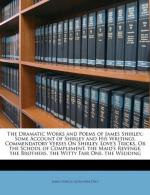|
This section contains 6,262 words (approx. 21 pages at 300 words per page) |

|
SOURCE: Morton, Richard. “Deception and Social Dislocation: An Aspect of James Shirley's Drama.” Renaissance Drama, 9 (1966): 227-45.
In the following essay, Morton contends that scholarly interpretations of Shirley's plays have been limited by the tendency to focus on the playwright as a transitional figure between the Renaissance and the Restoration. Morton examines Shirley's use of deception or trickery—especially disguise and mistaken identity—in several plays, finding that this plot motif successfully dramatizes particular social issues of the Caroline era.
The temptation to classify minor literary figures as transitional can hardly be resisted in the case of James Shirley, who was born in 1596, the year of the second volume of The Faerie Queene, and died exactly 300 years ago, in 1666, Dryden's Annus Mirabilis. As a comic dramatist, he has frequently been identified as a link between Jonson and the Restoration playwrights, between the comedy of humours and the comedy of...
|
This section contains 6,262 words (approx. 21 pages at 300 words per page) |

|


